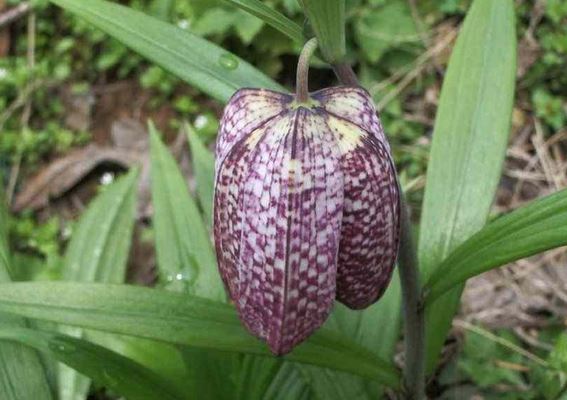Note4Students
From UPSC perspective, the following things are important :
Prelims level: IUCN
Mains level: Not Much
Three medicinal plant species found in the Himalayas have made it to IUCN Red List of Threatened Species following a recent assessment.
Species assessed-
- Meizotropis pellita : ‘Critically Endangered’
- Fritilloria cirrhosa : ‘Vulnerable’
- Dactylorhiza hatagirea : ‘Endangered’
(1) Meizotropis pellita

- Commonly known as Patwa, is a perennial shrub with restricted distribution that is endemic to Uttarakhand.
- The species is listed as ‘critically endangered’ based on its limited area of occupancy (less than 10 sq. km)
- The species is threatened by deforestation, habitat fragmentation and forest fires.
- The essential oil extracted from the leaves of the species possesses strong antioxidants and can be a promising natural substitute for synthetic antioxidants in pharmaceutical industries.
(2) Fritillaria cirrhosa

- Also called, Himalayan fritillary, it is a perennial bulbous herb.
- It is reasonable to conclude a decline of at least 30% of its population over the assessment period (22 to 26 years).
- Considering the rate of decline, long generation length, poor germination potential, high trade value, extensive harvesting pressure and illegal trade, the species is listed as ‘vulnerable’.
- In China, the species is used for the treatment of bronchial disorders and pneumonia.
- The plant is also a strong cough suppressant and source of expectorant drugs in traditional Chinese medicine.
(3) Dactylorhiza hatagirea

- Known as Salampanja, it is threatened by habitat loss, livestock grazing, deforestation, and climate change.
- It is extensively used in Ayurveda, Siddha, Unani and other alternative systems of medicine to cure dysentery, gastritis, chronic fever, cough and stomach aches.
- It is a perennial tuberous species endemic to the Hindu Kush and Himalayan ranges of Afghanistan, Bhutan, China, India, Nepal, and Pakistan.
Back2Basics: IUCN Red List
- The IUCN Red List of Threatened Species founded in 1964, has evolved to become the world’s most comprehensive inventory of the global conservation status of biological species.
- It uses a set of criteria to evaluate the extinction risk of thousands of all species and subspecies.
- A series of Regional Red Lists are produced by countries or organizations, which assess the risk of extinction to species within a political management unit.
- The IUCN aims to have the category of every species re-evaluated every five years if possible, or at least every ten years.
- For plants, the 1997 Red List is the most important source.
- The formally stated goals of the Red List are-
- to provide scientifically based information on the status of species and subspecies at a global level,
- to draw attention to the magnitude and importance of threatened biodiversity,
- to influence national and international policy and decision-making, and
- to provide information to guide actions to conserve biological diversity.
Red List Categories of IUCN
Species are classified by the IUCN Red List into nine groups specified through criteria such as rate of decline, population size, area of geographic distribution, and degree of population and distribution fragmentation. They are:
- Extinct (EX) – beyond reasonable doubt that the species is no longer extant.
- Extinct in the wild (EW) – survives only in captivity, cultivation and/or outside native range, as presumed after exhaustive surveys.
- Critically endangered (CR) – in a particularly and extremely critical state.
- Endangered (EN) – very high risk of extinction in the wild, meets any of criteria A to E for Endangered.
- Vulnerable (VU) – meets one of the 5 red list criteria and thus considered to be at high risk of unnatural (human-caused) extinction without further human intervention.
- Near threatened (NT) – close to being at high risk of extinction in the near future.
- Least concern (LC) – unlikely to become extinct in the near future.
- Data deficient (DD)
- Not evaluated (NE)
Click and get your FREE Copy of CURRENT AFFAIRS Micro Notes
Get an IAS/IPS ranker as your 1: 1 personal mentor for UPSC 2024
